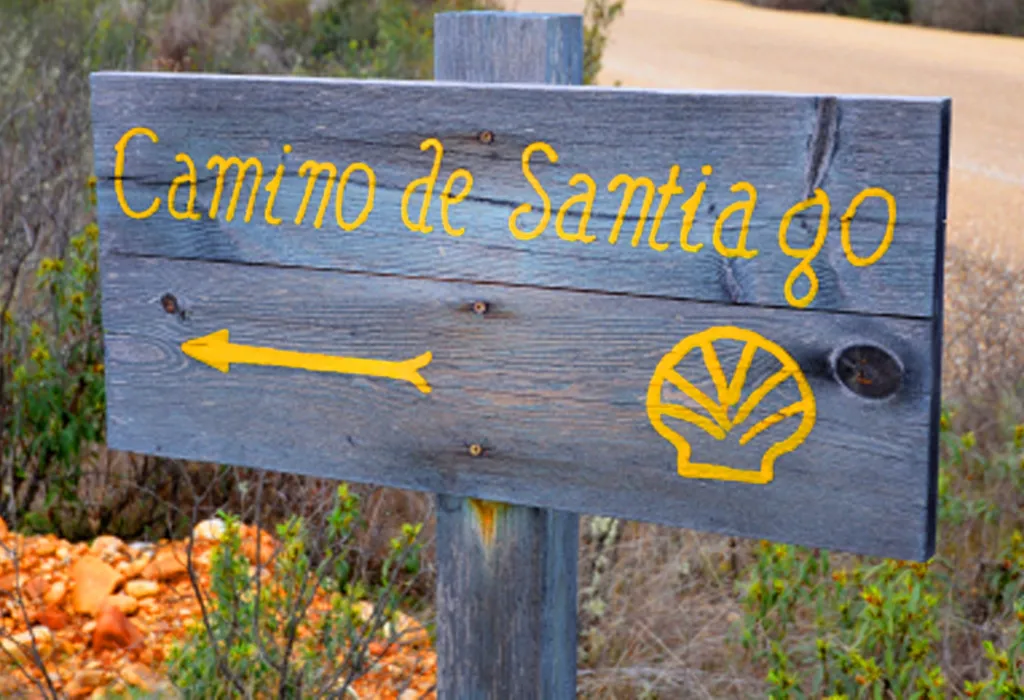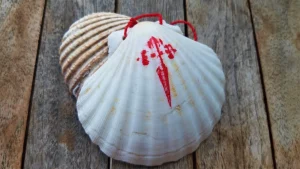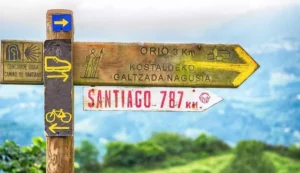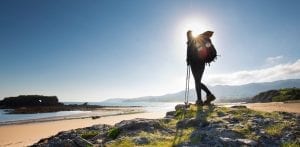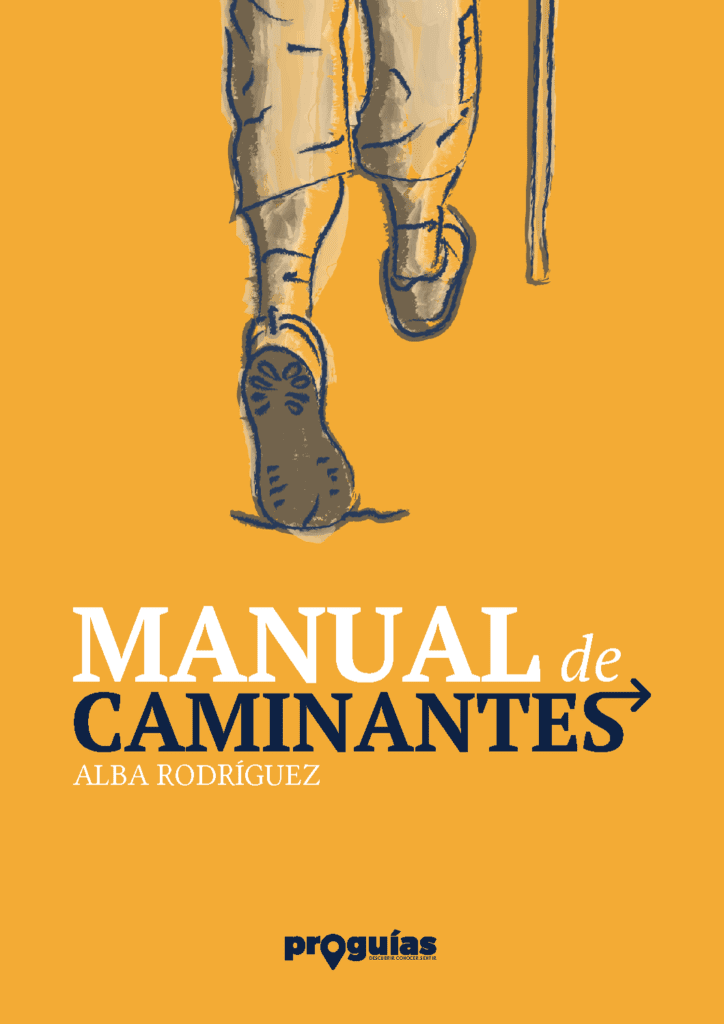One of the most special aspects of the Camino de Santiago is the enormous diversity of nationalities that can be found on it. From Oceania and Asia to America, passing, of course, through all corners of Europe, but also (increasingly) through several African countries. It is this continuous and diverse flow that keeps the Camino de Santiago alive and functions as a true bridge between cultures. For many people, the Camino is still about making a pilgrimage to the tomb of the apostle St. James the Greater. For others, the Camino itself is the goal. And the wonderful thing is that all this variety of backgrounds, histories and goals coexist seamlessly on the same routes.
In other words: every pilgrim does the Camino for very different reasons - be it a promise, a quest for adventure, contact with nature or religious motives. But invariably, in the course of their experience, they end up connecting with those who walk or cycle alongside them. People he has never met before and who become companions on the Camino.
In this text we want to focus on people who come to do the Camino de Santiago from Latin America. We want to address the special circumstances of this growing group and give some tips that we have gathered over years of experience in organizing the Camino de Santiago. After all, crossing the Atlantic to embark on a route made up of dozens of sections and thousands of kilometres is not the most typical option for a holiday in Europe.
So here are some useful tips and information for those who want to discover all that the Camino de Santiago has to offer.
1. Getting cheap flights from Latin America to Spain
The first challenge that anyone from Latin America will face is the need to cross the Atlantic. As there are several companies that have transoceanic connections between Latin America and Spain we advise you to use a flight comparator such as Skyscanner or eDreams. What we like about the first one is that you have the option to let their search engine select the cheapest month and show you a variety of prices depending on the day of the flight. This way you can adjust prices as much as possible and get cheap flights.
Note that most flights arriving to the Iberian Peninsula from Latin America arrive at Madrid, Lisbon, Porto and Barcelona airports. From these places you will need to travel by train to the starting point of your Camino, or transfer to an airport closer to you, such as Pamplona, León or Santiago de Compostela. These domestic flights are, of course, much cheaper. The main difficulty will be getting the timetables right so that the interchange time is not too long. In Proguías we do not offer ticketing services, but if you have doubts about which is the closest airport to your starting point of the Camino, please contact us without obligation.

If your idea is to do the last 100 km of any of the Caminos (which is the minimum distance to obtain the compostela, as we explained here), our recommendation is that you go to Santiago de Compostela (SCQ) and from there you travel by bus, train or private transport to the place where you are going to start your Camino. If you do not have a direct flight to Santiago, the Madrid-Santiago or Barcelona-Santiago connection is really cheap when planned in advance.
It may be that you are still not sure which route of the Camino to take. If this is the case, we recommend this article.
In any case, the best time to buy tickets is usually two months before the start of the journey. When selecting the date, you will find that early and late weekends are more expensive than if you book tickets on weekdays. Some studies indicate that the best day to buy tickets is Tuesday and the most expensive is Friday, which is undoubtedly related to our consumption habits.
2. Which month should I choose to do the Camino de Santiago?
Deciding the perfect time to do the Camino de Santiago has a myriad of nuances. It depends on the time you have available, your preferences or when you have your holidays. Because, when talking about Latin America, we have to take into account that the austral summer and the boreal summer do not coincide.
In any case, for your reference, the cheapest months to travel to Spain are between October and February. That is, in the northern winter months. However, this has an advantage, because October and November are great months to do the Camino. You just have to keep in mind to prepare for colder weather. In the months of December and January, however, the situation gets a bit more complicated. In addition to colder weather and more rain, many of the Camino's accommodations are closed for rest. So we do not recommend coming on an adventure, but rather to confirm that there are places to spend the night. February is the month when many of the accommodations reopen their doors and the Camino is busy again. Does this mean that you can't do the Camino in the middle of winter? On the contrary. It is possible and it can be very rewarding, but you have to be prepared. Here we explain more on the Camino de Santiago in winter.
On the other side of the coin, the northern summer months, from July to September, are the most expensive and busiest on the Camino. In these cases, it is better not to gamble and take everything booked to have a place to sleep and be quiet enjoying the scenery, gastronomy and walking. After all, most accommodation on the Camino de Santiago is small, and the supply of rooms is limited.
In summary: our recommendation is that you avoid the coldest months, but also the hottest, and do the Camino in spring or autumn. Fundamentally for two reasons. First: you will have a milder climate, with less extreme temperatures. Second, you will avoid the overcrowding of the Camino in the summer months (especially if you opt for the French Way).
Handbook of Pilgrims
Download the most complete guide to prepare the Camino de Santiago from scratch and step by step.
3. Electronic devices
Although in some Latin American countries such as Argentina, Brazil, Chile or Cuba the same type of plug used in Spain and Portugal (type C plug) is common, it is important to keep in mind that if your electronic devices have a different type of plug, you will need to buy an adapter. In Mexico, for example, type A plugs (with thin rectangular pins) are very common, which are very uncommon in Spain and Portugal. Keep this in mind.
In Spain the power supply is AC220 volts, 50 Hertz; while the voltage in Portugal is 230/400 volts and the frequency is also 50 Hertz. In both cases, the sockets comply with European regulations and use the round pin system.
4. Public holidays
We must take into account that during public holidays and non-working days, many of the services will be closed or will have minimum services. This does not affect the services that we manage at Proguías, but it may affect other services and establishments that you will find along the stages. Here are some of the public holidays that you will find in Spain and Portugal: 1 January - New Year's Day | 6 January - Epiphany | Good Friday (changes every year) | 25 April - Liberdade Day (Portugal) | 1 May - Labour Day | 10 May - Ascension Day, local holiday (Santiago de Compostela) | 10 June - Portugal Day (Portugal) | 15 August - Assumption of the Virgin Mary | 16 August - San Roque, local holiday (Santiago de Compostela) | 12th October - Hispanidad (Spain) | 1st November - All Saints' Day | 6th December - Constitution Day (Spain) | 8th December - Immaculate Conception Day | 25th December - Christmas Day.
5. Emergencies
Although at Proguías we have a 24/7 incident response service for people who travel with us, it is also good to know that for any emergency, whether you are in Spain or Portugal, you can call the European Emergency Telephone 112.
When you explain the emergency situation to them they will refer you to the appropriate professionals, ambulance, fire brigade, police, etc. It is easier to remember a single number and have the emergency professionals take care of the communication with the relevant services.
Moreover, all our programmes have a travel insurance adapted to the Camino de Santiago, considered for these purposes as a sporting activity. But even if you do it on your own, we always recommend taking out such insurance - although medical care in Spain and Portugal is not, in principle, subject to insurance.
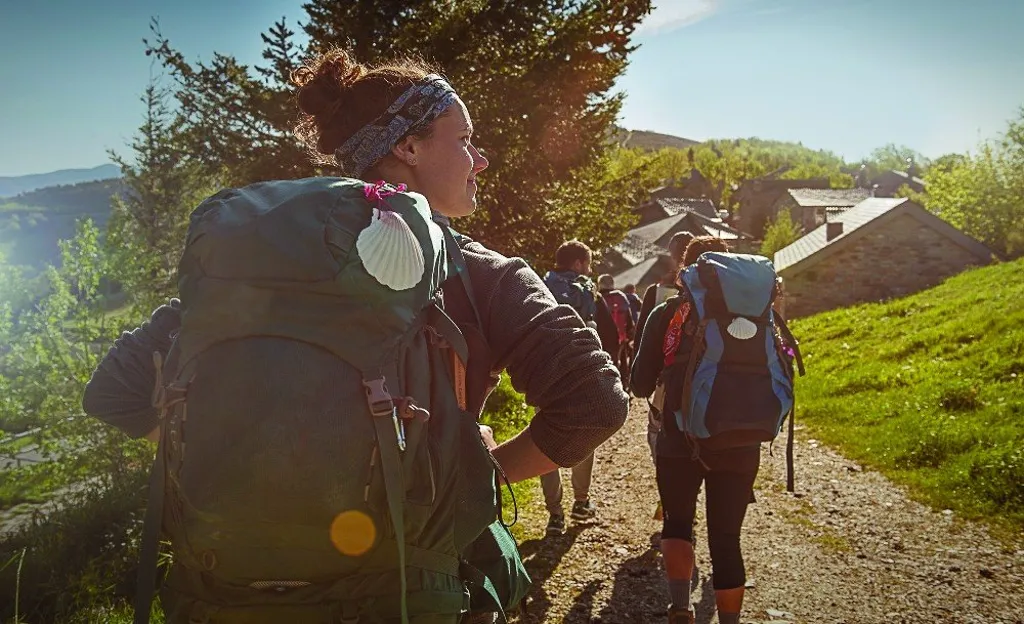
6. Visa for access to Spain and Portugal
And now, one of the most frequently asked questions we receive from people travelling from Latin America: the visa to enter Spain and/or Portugal. Both countries, as members of the European Union, are within the so-called "Schengen area", which is an area of Europe through which all persons who have entered legally through an external border or reside legally in one of the countries that make it up can move freely.
This means that, once you enter it, you will not need to use your passport to move from one country to another. In addition, the Schengen area has agreements with a number of countries, so travellers from these countries are exempt from visa requirements. The exempt list includes a number of Latin American countries: Argentina, Bahamas, Barbados, Brazil, Chile, Colombia, Costa Rica, El Salvador, Grenada, Guatemala, Honduras, Mexico, Nicaragua, Panama, Paraguay, Peru, St. Kitts and Nevis, St. Vincent and the Grenadines, St. Lucia, Uruguay and Venezuela.
7. Passport COVID-19
Finally, the most frequently asked question we have received in recent times: what about the Covid passport? The truth is that this situation has been changing rapidly and constantly, so that it is difficult for travel agencies to keep up to date with all the regulations of each of the countries from which people travelling to Spain or Portugal come. In addition, the requirements of Spain and Portugal, despite both being within the European Union, are different.
At the time of writing, there are no active entry bans related to country of origin, but there are bans based on vaccination and PCR testing. For example, at the moment, Spain does not allow access to people vaccinated with the Sputnik V vaccine, which may change in the coming weeks or months. As these requirements are constantly changing, it is best to consult the information published on the internet by the Spanish and Portuguese embassies in each country.


